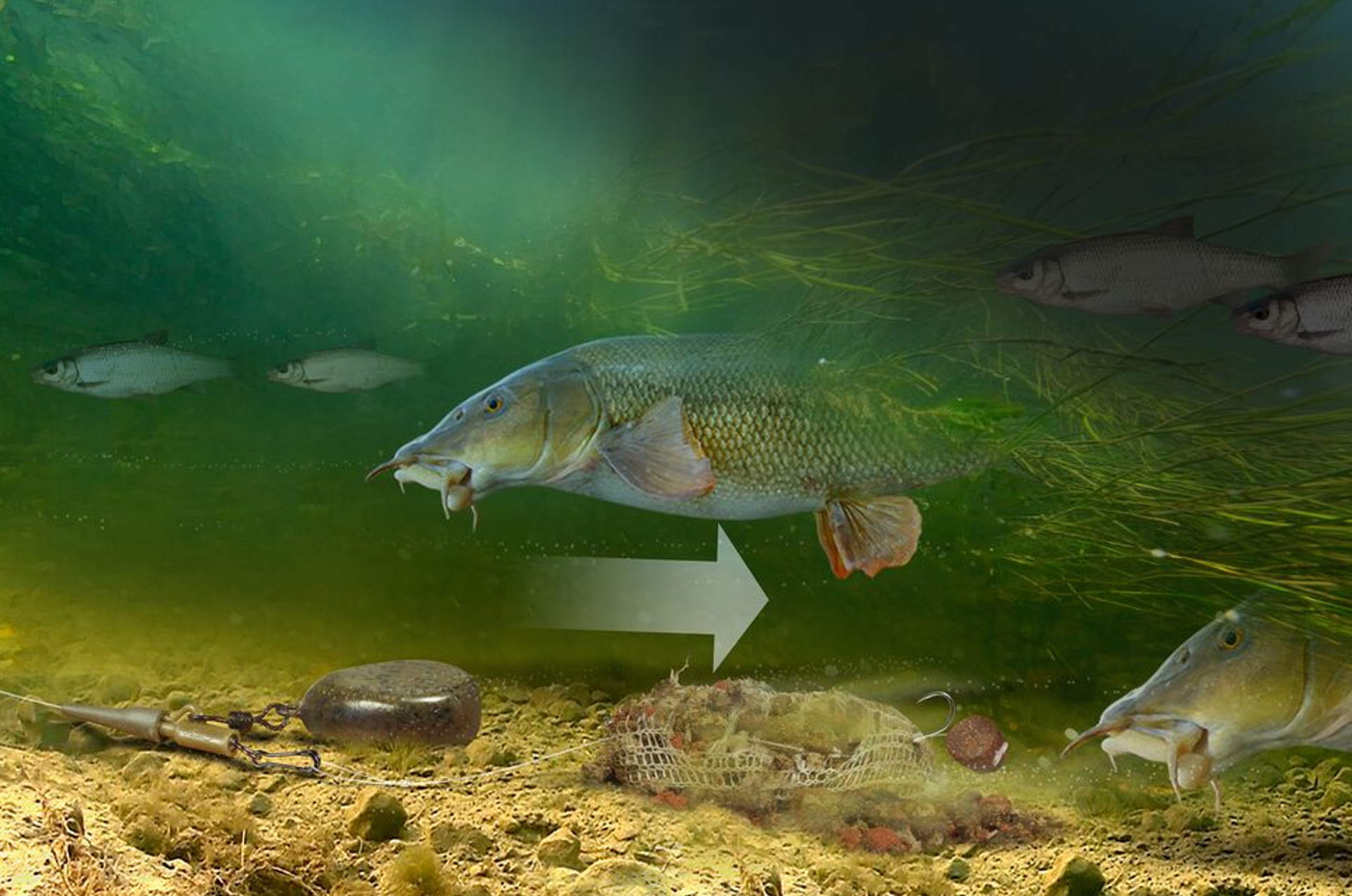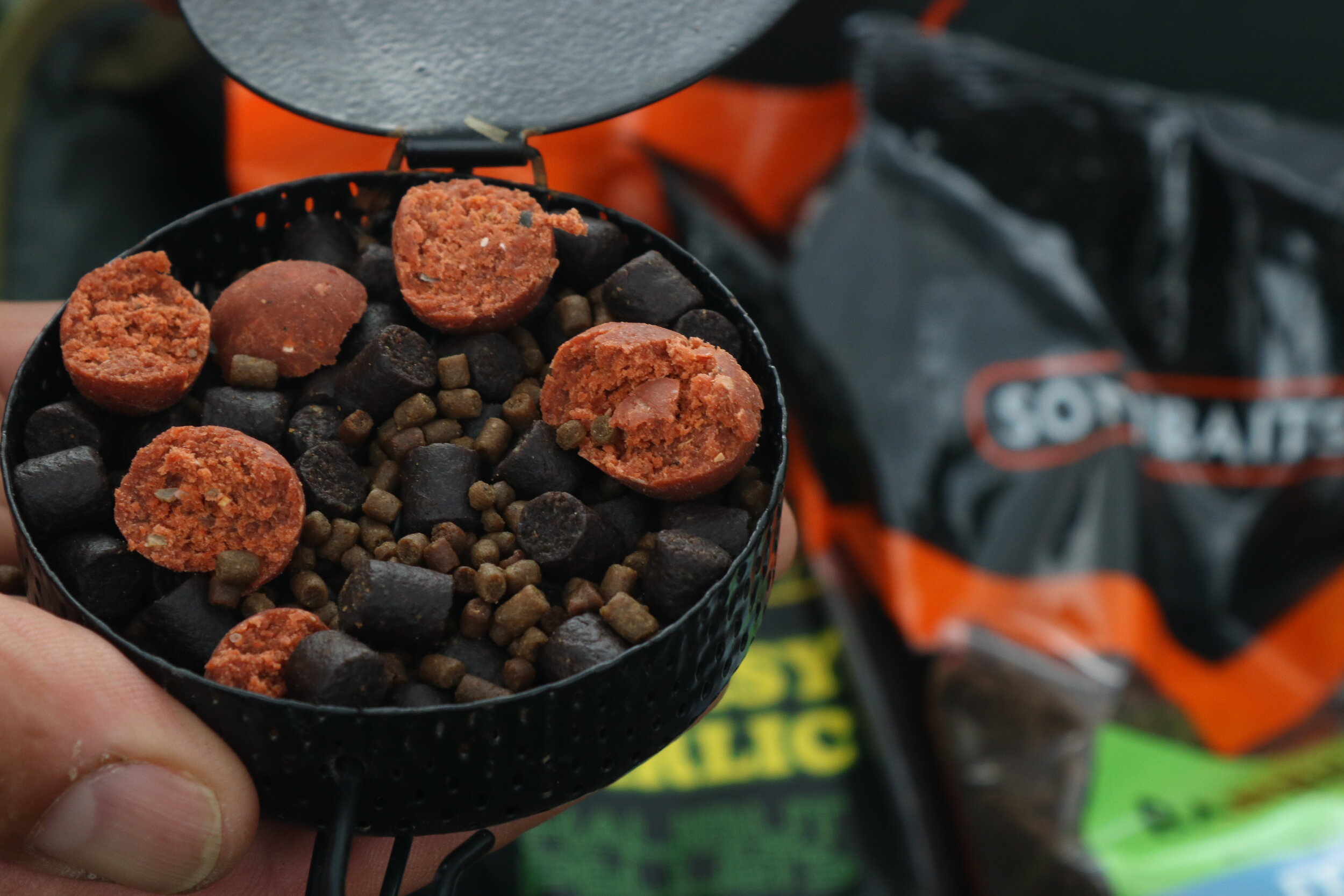River Fishing Tips | How to find barbel on a flooded river - Dai Gribble
In prolonged floods, barbel seem to gradually move out of the main flow into slower flowing water. I suspect this coincides with them having fed well and preferring to rest up in areas where they need to expend less energy.
Barbel will move away from fast flows in prolonged floods
This helps you locate the barbel as once the river has been in flood for a couple of days, they are more likely to be found in the classic flood swims where the flow is less than in the main river.
I’d look for the following:
Bends with slack water on the inside and a crease where the main flow passes by.
Cattle drinks where there is slow-flowing or slack water out of the main current.
Slacker water behind overhanging obstructions such trees.
Deep holes where the barbel can lie in slower flows beneath the main pace of floodwater.
Slacks downstream of large bridge supports.
Search out slacker areas of water for barbel in times of flood
River Fishing Tips | The best way to attach a PVA bag when barbel fishing - Jamie Cartwright
The best way I’ve found is to thread the PVA bags directly on to the hooklink using a long baiting needle.
I use a quickchange swivel and tie a loop in the end of my hooklink, which allows me to quickly take off the hooklink, thread on a bag of pellets and boilies and slide it down so it rests against the hook, then reconnect the loop to the swivel.
I use a lead clip arrangement when using mesh bags. A running lead can slide back up the line and you get too much separation between the lead and the bag, making casting difficult.
This is a vast improvement on just nicking a bag on to the hook, as more often than not the first part of the PVA to melt is the bit attached to the hook, and the bag can just roll away!
Threading a PVA bag down the hooklink is a reliable way to present loosefeed when barbel fishing
River Fishing Tips | How to bait for barbel - Dai Gribble
I prefer a bait dropper over making lots of casts with a feeder because it’s accurate and often much quicker too.
A bait dropper is a quick and accurate way to feed a barbel swim
I bait up with different-sized pellets and a few crushed boilies. The pellets keep the fish in the swim for long spells while the crushed boilies give them a taste of my hookbait.
Use a real mix of pellets to keep the fish in the swim for longer
Crushing the boilies releases lots of flavour. I’ll introduce around a pint of mixed barbel pellets and 30 crushed boilies, the exact amount depending on several factors…
The size of the river - The bigger the river I’m fishing, the more bait I will use.
Large well stocked rivers like the Wye, Trent and Severn require heavier feeding
Stock of barbel and other species - if I know there are a lot of barbel, chub, or even silverfish such as roach I will up the amount of feed I put in at the start.
If there are lots of fish they will need more feed
Temperature - As temperatures drop towards autumn, I will scale back on the amount of bait being fed.
Scale back the feed as temperatures drop
How long I am fishing for - The longer my session, the more feed I will introduce.
If you are fishing a long session, try a bait and wait approach
River Fishing Tips | 5 Tips For Barbel
Go for the gravels
Although a swim on somewhere like the River Severn might seem to have a similar depth and pace all the way across, there are definite areas that barbel prefer. The most productive of these will be shallow water, which in turn will be much faster and better oxygenated in summer when rivers are often low and sluggish. Combine this with a gravel bottom and you’re in business.
Gravels are a hotspot for barbel
Use enough lead
As with any type of fishing, your rig needs to act naturally in order to get a barbel to take the bait. That means keeping everything nailed to the deck. A feeder that’s carrying too little weight to hold bottom will roll down the swim, with no chance of a fish picking up the bait. Before the session, cast with a range of different weights of feeder until you find the one that holds bottom just where you want it. Be aware that the flow could increase when you start fishing, so have some even heavier feeders to hand just in case.
You need enough lead on the feeder to hold bottom
Don’t go undergunned
Barbel fishing isn’t like going after roach or dace. You have to make sure that you are able to take control of every battle and that means using suitably robust tackle. A long hooklength is important because the fish seem to spook and feed less confidently close to a feeder. Start with a 5ft tail of around 0.20mm hooklength material, matched to strong size 12 or 14 hook.
Don’t go too light for barbel
Old school baits can be the best
Pellets are catching ever more barbel on rivers, but at times they can be a bit too much of a slow burner. For a more high-impact feed, it’s hard to see past hemp and casters. These small particles, introduced via a blockend feeder, will keep fish grubbing around for ages and pull other valuable fish, such as chub and perch, into the area too, letting you catch these while waiting for a barbel to pull the rod in!
Hemp and casters are deadly barbel baits in clear water
Put a bow in the line
If you keep a very tight line between the rod tip and feeder when barbel fishing, then you’re asking for trouble! Bites can be ferocious and before you’ve even picked the rod up you could have been broken, even when using heavy gear, due to the lack of forgiveness in the set-up.
The solution is to have a bow in the line, which means that the line is slacker and creates a cushion that reduces the chance of being smashed. Bites when fishing like this will normally be a sharp knock on the tip and then a drop back as a fish moves the feeder and the line slackens off.
Fish with a bow in your line
River Fishing Tips | Cage or solid feeder for barbel? - Dai Gribble
As well as carrying feeders of different sizes and weights, it pays to have different types in your tackle box so you can vary the rate at which your feed is released into your swim.
Cage and solid feeders both have uses in barbel fishing
A cage feeder will empty much quicker than a traditional, solid-style feeder with just a few holes. So, If bites are coming soon after casting, opt for a cage feeder so that the bait is deposited rapidly int the swim, otherwise the feeder will still be full while you are playing a fish and will end up emptying its contents across the river.
Cage feeder barbel fishing rig
If bites are slow in coming, however, it pays to use a solid, slower-release feeder to ensure bait is trickling past your hookbait and down to the fish for much longer.
A cracking River Severn barbel

















